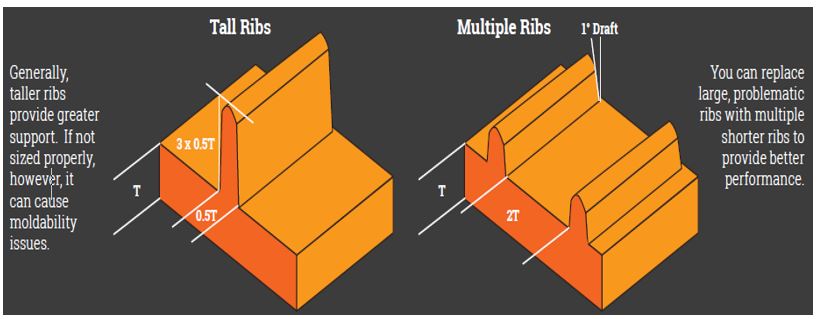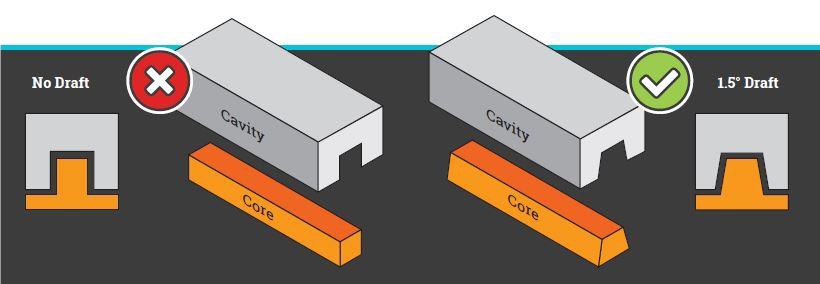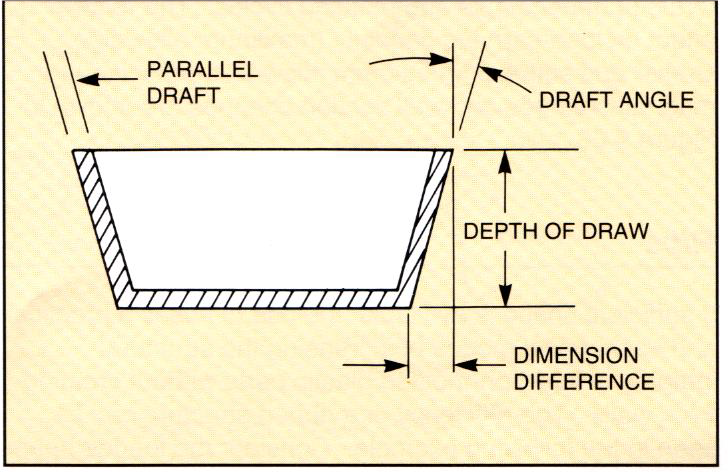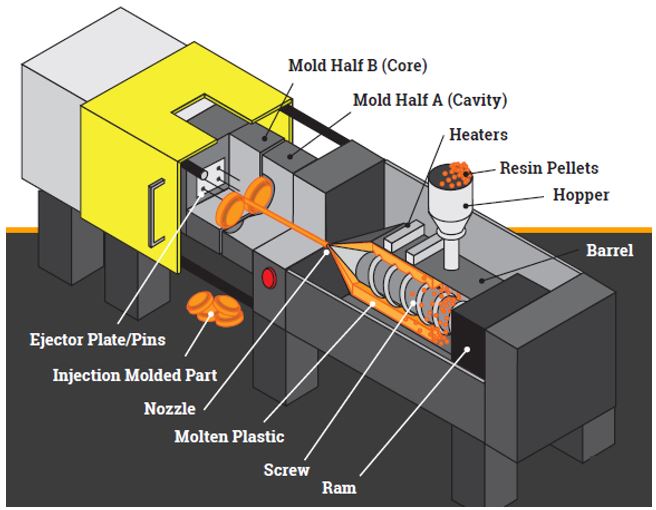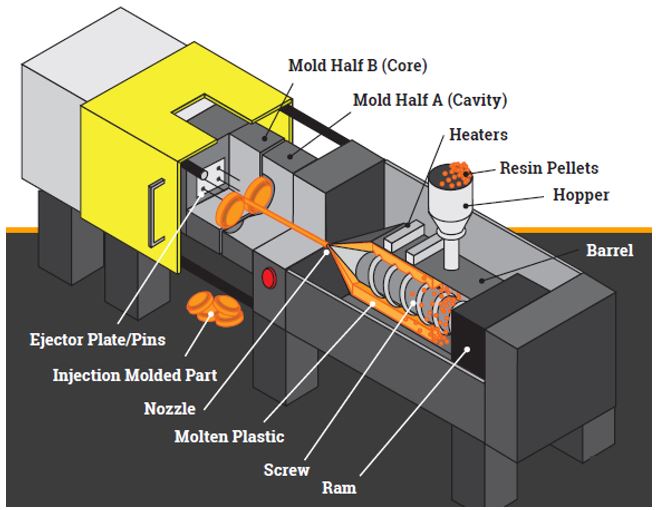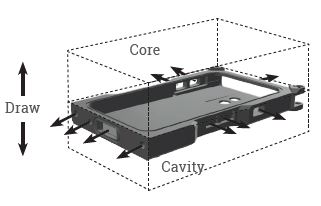Ribs are a feature in plastic injection molded parts. They are thin extensions that run perpendicular from a wall or plane. They are commonly used to provide additional support and strength to a part.
Search Results for: wall thickness
Draft Angles Can Improve Plastic Part Designs
Plastic parts should be designed with draft to prevent sticking and ejector pin push marks on the outward surface during ejection. Applying the proper draft angles or tapers on the surface of an injection molded part is critical to part moldability.
Designing for Plastics
The success of your plastic part relies upon many key elements working simultaneously. There are many factors that influence the outcome of your plastic part and should be taken into consideration when designing with plastics as follows:
Adding Injection Molding Features to Your Part
Plastic resin pellets are loaded into the hopper, where it travels into the barrel of the injection molding machine. Through both heat and pressure, the plastic pellets are melted into a molten material that is ready to be injected. As the screw turns it creates pressure which will help push the molten plastic through the nozzle and into the mold.
Top 3 Injection Molding Pitfalls To Avoid
Before we jump into the injection molding pitfalls you should avoid, here’s a quick review of the Injection Molding Process, Injection Molding Basics, and Rapid Injection Molding.
How To Use Undercuts In Plastic Injection Molding
Undercuts achieve complex plastic part designs for the injection molding process. For example, overmolding and insert molding.
An undercut is any indentation or protrusion that prohibits part ejection from a mold. It is a feature that the cavity and core cannot capture alone. It is die-locked which prevents the part from being ejected from the cavity.
